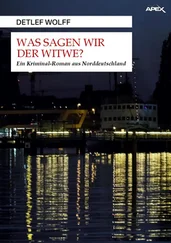Crabbing against a setting current, the K-363 crept down the western coast of Norway.
“Depth to keel?” Litvanov said from the periscope stand.
Veroshilov had his lower lip trapped under his front teeth. The Norwegian coast was host to graveyards of ships that had blundered into unmapped seamounts and scarps.
“Sounding!” roared Litvanov.
“Ten fathoms, Kapitan.”
Litvanov racked the scope’s magnification control through a series of detents into high power. “Take a look,” he said, turning the scope over to Zakayev.
He saw a pair of headlights moving south on a road carved from the living rock of the peninsula that formed the western bank of Vest Fjord. On the peninsula’s tip he saw a lighthouse warning seafarers of shoal water.
“See any good restaurants?” Litvanov laughed. “The Norwegians make a fantastic fiskepudding with haddock. Maybe we can send a man ashore to get some.” He laughed again.
Zakayev wasn’t amused. Litvanov had insisted on cruising in littoral waters virtually up against the Norwegian coast to avoid detection and to stand clear of commercial shipping lanes. But the fear of running aground had set the crew’s teeth on edge and made Veroshilov argumentative. So far they had encountered only Norwegian and Japanese fishing boats and a few rusty coastal luggers. And Litvanov was thinking of food. Well, let him, Zakayev decided. There wasn’t much time left to think of things that once made life enjoyable.
He stepped away from the scope and beckoned the girl to have a look too.
“Quick now: What do you see?”
“Lights. Strings of moving lights shimmering on the water.”
The SC1 speaker hummed, then: “Kapitan—sonar contact! Bearing three-two-zero, converging.”
Litvanov took a quick look at the CCP’s sonar repeater with its sloping trace line and saw an unidentified contact closing in on the K-363. He sprang to the periscope stand and pushed the girl aside.
He saw her string of lights. Red and green running lights on a vessel standing out of Vest Fjord. To Litvanov’s night-adapted eyes there was something about her top hamper…. He switched to infrared and a spectral image danced before his eyes: a heat bloom from the turbines and exhaust stacks of a frigate-size ship.
“Switch to narrow band sonar,” Litvanov commanded.
“Aye, Kapitan.”
“Come right twenty degrees.”
The helmsman acknowledged Litvanov’s order.
On the sonar repeater the sloped line had disappeared, replaced by a horizontal row of bouncing green spikes. The sonar system needed time to filter and compare the received sound frequencies with signatures archived for the purpose of identification.
“Periscope down.”
“What is it?” Zakayev said.
Litvanov stood by the periscope stand with arms crossed on his chest, not moving a muscle. “Maybe nothing. Then again…”
The row of bouncing signature spikes on the CCP monitor had frozen while the computer searched its memory for a matching set. They meant nothing to Zakayev, yet had taken on a life of their own. He sensed that the next few minutes were critical to their mission.
The monitor peeped and displayed a match: overlapping green on blue spikes.
“Oslo-class frigate, Kapitan. The KNM Narvik, F-304.”
“Periscope up. Let’s have another look.”
As the K-363 slowly pulled away from the coast, Litvanov kept the scope planted on the Royal Norwegian Navy frigate. Her convergence onto the K-363’s track, whether by design or accident, prompted Litvanov to offer a running commentary.
“She’s one of those older ASW frigates, probably equipped with variable depth sonar. ASW rockets. She’s either heading out on an exercise or—” He didn’t finish his thought.
“Kapitan—new contact. Bearing one-eight-zero, also converging. Sounds close.”
The sonar repeater recycled to the new contact.
A minute later: “Oslo-class frigate, Kapitan. The KNM Trondheim, F-302. She still has that nicked prop blade on the port shaft.”
Litvanov put the periscope on 180. “I’ve seen her before. She’s in trail with the Narvik. Periscope down!”
“How could the Norwegians know we’re here?” Zakayev said.
“They have a SOSUS—Sound Surveillance System, an underwater linked hydrophone system developed by the Americans to track our submarines. The information from the Norwegian system goes to a central operations headquarters in Stavanger, where they identify submarines from recordings of their machinery and propeller noises. The American SOSUS arrays used to be strung out on the sea bottom across choke points near Greenland, Iceland, and the U.K. Also the mid-Atlantic ridge. Even in the Barents. But we cut the cables and destroyed the arrays. The Americans finally gave up repairing them and shut down the system.
“The Norwegian system is no longer fully operational. Luckily for us, their coastal waters are strewn with rock and bottom heaves. Also, the salinity varies. Temperature layers too. Sonar is unreliable under those conditions and often gives off false alarms. This may be one. We’ll soon see.” Litvanov consulted the navigation chart. “We’re here, just north of these two groups of small islands off the tip of Lofoten.”
Veroshilov had monitored the automatic plotter responding to inputs from the ship’s inertial guidance system. The plotter’s stylus mounted under the backlit plotting table had recorded the K-363’s track, now an open-ended С on the acetate overlay marked with grid lines.
“We’ll turn ninety degrees off our present track and rig for ultraquiet. If the frigates turn west, they’ve probably been vectored into our area.”
Litvanov issued the necessary orders. One turbogenerator went offline to reduce the K-363’s already minimal sound signature, as did machinery and equipment not essential to her operation, such as ventilation fans and the oxygen generator that broke water down into hydrogen and oxygen.
“Will they find us?” the girl whispered to Zakayev. He put an arm around her shoulders and felt a shiver. He whispered back, “Don’t worry. Litvanov knows what he’s doing.”
* * *
In the Combat Information Center aboard the frigate KNM Trondheim, Royal Norwegian Navy Kaptein Löytnant Gunnar Dass paced the deck. He tore open a fresh pack of cigarettes and tamped one out.
“Commander—incoming Priority.”
Dass turned on his heel and strode to the twittering Multex terminal. He seized the message after it had finished rolling out of the teleprinter, scanned it, then headed for the bridge. The Trondheim’s skipper, Orlogs Kaptein Harald Bayer, broke off his conversation with another officer and motioned Dass to follow him into the wheelhouse out of the wind’s cold fury.
“ComlnC FOHK Stavanger, Captain.”
Bayer read the message under a red-lit battle lamp. “So, a possible second submarine contact.”
He summoned the signals yeoman, who had a clipboard with recently decoded messages. The one Bayer wanted had arrived less than an hour earlier and he gave it a quick review, then reread the message Dass had collected from the Multex.
“Perhaps this latest one is a genuine contact. Any thoughts, Mr. Dass?”
“The Russians again, trying to prove something? But what? That they can elude us?”
Bayer looked seaward, where a sliver of dawn had arrived over the coast of Norway. “The Russians tried it years ago off Sweden. The Swedes couldn’t find them and were ready to admit it when the Russian sub ran aground in the Skagerrak. I don’t think the Russians would risk embarrassing themselves again.”
Dass looked blankly at his captain’s profile. Bundled in a heavy khaki-colored bridge coat with the collar turned up, a white silk scarf at his throat, binocular shanging from his neck on a strap, Bayer faintly resembled a European film star whose name Dass couldn’t recall.
Читать дальше












